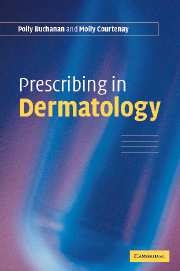7 - Urticaria and angio-oedema
Published online by Cambridge University Press: 22 September 2009
Summary
Urticaria (also known as hives) is a common skin condition which affects the dermis. It manifests as macules (flat lesions) and weals (superficial oedema) on the skin which are frequently erythematous and itchy (Marks 1983) (see Figure 7.1). It is a transient condition, with lesions appearing and disappearing within a few hours (Schocket 1993). This reaction can occur on a daily basis and involve numerous lesions with flares lasting a few days to weeks. Chronic cases can last for months or years although approximately half of urticaria cases undergo spontaneous resolution within 6 months (Champion et al. 1969). The age of onset is variable and can first appear in both childhood and throughout adult life.
Angio-oedema can also be associated with urticaria and is recognised as a similar but deeper reaction, affecting the subcutaneous (SC) layer, deeper dermis and submucosal tissues (Grattan 2000) (see Figure 7.2). Urticaria and angio-oedema are classified according to the duration of the lesions and trigger factors (see Tables 7.1 and 7.2). Therefore careful history taking and clinical assessment are important.
Pathophysiology
The weal and flare reaction of urticaria is due to increased permeability of the skin capillaries and venules. A major mediator in the development of weals, flare (erythema) and itch is histamine which is released from skin mast cells. The histamine which is released targets the H1 receptors in the skin to initiate such a response. Hence the role of antihistamines in the management of urticaria (BNF 2005).
- Type
- Chapter
- Information
- Prescribing in Dermatology , pp. 69 - 77Publisher: Cambridge University PressPrint publication year: 2006



